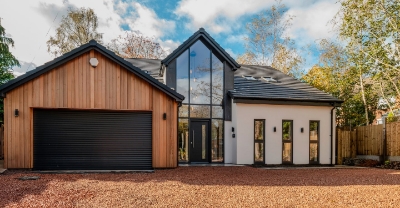There are many different types of render available in the market today and you as a consumer have to decide what type of Render System to purchase. Whether it be to replace the current render or to install a new render, it’s important to understand the differences between these Render Systems.
In this Blog, we will cover the five different types of render available and each of their properties so you can decide which is the best for your needs.
1. Acrylic
Acrylic render is typically made by adding acrylic resin to the render system. This makes the render gain various qualities from the acrylic, which include water resistance and flexibility, thus making it less likely to crack.
However, this makes acrylic render less environmentally friendly and reduces breathability for your walls, this can create issues with damp.
2. Cement
Cement render is made by mixing sand and cement to make a mortar, this is then applied to a wall to create a flat covering. Cement is one of the most basic and traditional types of render which when dry, creates a grey cement colour which can then be painted. However, a pigment could be added to the mortar to give the render its own colour when applied.
Cement render is very simple and cheap however, it doesn’t look nice, last long and isn’t weather resistant.
3. Lime
Lime render is made using lime and sand to create a mortar. The lime makes the render less likely to crack, It also adds a natural quality to the finished look.
Opposing Acrylic render, Lime render is relatively environmentally friendly and also much more durable than cement render. The main negative to this type of render is that it costs quite a lot alongside it taking a long while to apply.
4. Pebble Dash
Pebble Dash render is made by adding gravel, pebbles, shells or flint to a cement or lime mortar. These can be added to the mixture or to the wall after mortar application.
For both methods, pebble dash render adds a rough texture to a wall and adds a lot of weather protection to a wall. The best thing about this unique render is that it’s relatively cheap. However, it can make a wall look dated when worn.
5. Silicone
A lot like acrylic render, silicone render is made with cement and silicone. This creates a water-resistant render which stays breathable and needs minimal maintenance.
Although, Silicone render is really not eco-friendly and costs a considerable amount more than other alternatives.

